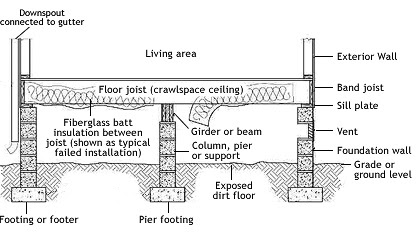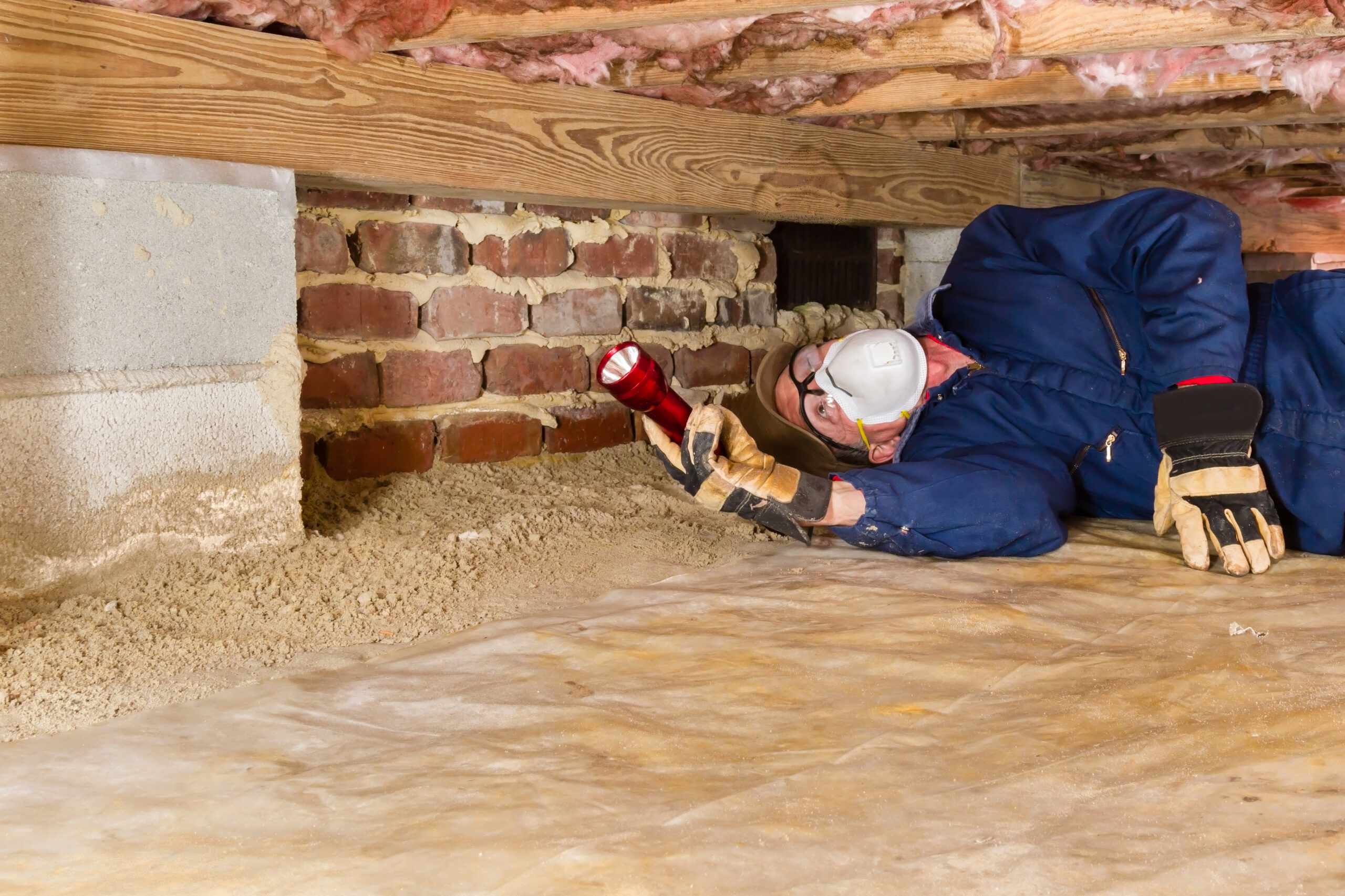Crawl spaces are out of sight and out of mind, making them easy to neglect. Crawl space issues OFTEN rear their ugly heads during a real estate transaction, so it’s important for homeowners to learn to maintain this area. A crawl space inspection is typically included in a standard home inspection when buying or selling a house. This is an area where issues tend to arise and can throw a wrench in the home sale. Both home sellers and buyers should be aware of the state of the crawl space in order to mitigate any potential problems prior to the sale.
Prior to listing their property, sellers should make sure they have adequate access to their home’s crawl space and consider having it inspected by a crawl space contractor. Buyers should make sure that their inspector fully inspects the crawl space. If access is not adequate for inspection, the buyer should not release the inspection contingency until it is provided.
Purpose of a Crawl Space
A crawl space, as its name implies, is a basement variation in which one crawls around. It may be only a foot tall, and the surface is often bare earth. Traditionally, crawl spaces are built within homes lacking a basement or homes that are built on the ground instead of a slab. The primary purpose of a crawl space is to promote air circulation through the home and allow easy access to plumbing, electrical work and other maintenance, repair and installation needs.

Moisture
Signs of excessive moisture throughout the home are often noticeable, but signs of moisture in your crawl space may be harder to detect. Unfortunately, moisture in a crawl space can be just as problematic, causing complications such as mildew, dust mites, mold and wood rot. When there is nowhere left for moisture to go within a crawl space, it can travel into your insulation, flooring and walls to create even larger problems. Crawl spaces with exposed dirt most commonly have trouble with excess moisture. A vapor barrier is one of the best ways to protect your home against the encroachment of moisture. A vapor barrier is essentially a large plastic sheet placed over the base of a crawl space to fully cover any exposed dirt.
Energy Loss
A crawl space isn’t a livable part of the home, but insulation is still important to keep in the heat. Crawl spaces can be a major source of energy loss. If you find yourself running your furnace all winter long and driving up high energy bills, yet still feel cold on the ground floor of your home, your crawl space could be the issue. Insulating your crawl space depends on the general climate in the area. In warm or dry areas, insulation can be limited to just the area between the floor joists.
Pests
Crawl spaces can easily become a dwelling for pests if they are not properly secured and maintained. Since most homeowners don’t spend much time in their crawl space, it may be harder to determine if there is a pest problem. Pests such as mice, rats, termites, carpenter ants, spiders and more have the ability to damage insulation, crawl through vapor barriers, dig into wood, and even tunnel into your main living spaces. Proper crawl space maintenance can help prevent pests.
Structural Issues
Crawl spaces can experience structural sinking or sagging due to a variety of reasons:
- Support columns spaced too far apart.
- Joists, girders and posts have been weakened by rot.
- Weak soil and poor footings cause columns to settle.
If these issues are identified, contractors with an expertise in crawl spaces and foundational supports should be called in to strengthen the weak points.
How to Identify & Avoid Crawl Space Water Issues
Issues relating to moisture in crawl spaces (and basements, for that matter) are becoming increasingly prevalent in real estate transactions as the Northwest’s rainy season is longer and wetter than it used to be. Home inspectors need to pay extra attention to evidence of water in subterranean spaces, especially during the dry season.
According to Chris Nelson, of Blue Roof Home Inspections LLC, “Since most of the water entering crawlspaces and basements come from two sources: (1) Improper sloped hardscapes and soil and (2) Roof drainage issues, inspectors should be able to catch drainage problems in the dry seasons as well as the wet.”
Nelson reports that homeowners and future homeowners try to identify sources of moisture by looking around the home’s exterior. “Look at the site to ensure the soil, yard and hard surfaces are sloped away from the structure. Roof drainage issues are easier to see, simply by checking the slopes of the gutters, the joint connections, cleanliness of the gutters and checking that the downspouts are properly diverting the water far enough from the foundation.”
There can also be clues on the inside of the home. “Other clues in the crawlspaces and basements are visible during dry times that can help determine if there is a drainage issue that should be corrected. Looking for efflorescence and moisture stains on the interior concrete walls, past and repetitive moisture stains on the bottoms of the support posts and pools of dry soil on top of the vapor barrier give additional evidence that a moisture/drainage problem exists.”
While we know that crawl space repairs are not sexy or the least bit fun, you can see why it’s not a good idea to space on your crawl space!
